
The close of 2014 came with an early burst of winter across much of the United States. Many people greeted winter’s unexpected arrival by heading for hibernation, but a whole population of hearty souls celebrated the first flakes that heralded the start of winter sports.
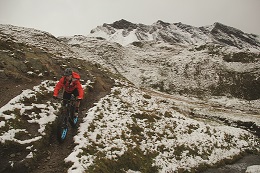
Winter sports are many and varied, and while some sports are catapulting in popularity, others are holding steady. More than 18 months ago, SnowSports Industries America (SIA) teamed up with more than 20 research and non-profits organizations to begin the first phase of a research program called the Downhill Consumer Intelligence Project (DCIP), created to uncover what it will take to attract new downhill snow sports participants. One option, says Pete Davis, executive director, The United States of America Snowboard and Freeski Association (USASA), is to offer young participants the ideal facility for learning.
“Kids are really interested in slopestyle and interesting terrain park features,” says Davis. “Slopestyle’s appearance in the Winter Olympics in Sochi really captured the interest of riders and skiers who watched the broadcasts. The problem is that most resorts are convinced that the only half pipe they should consider constructing and maintaining is a 22’ Super Pipe that has a very steep cost to build and maintain. Smaller pipes are great for kids to learn on and progress to larger pipes. It would be great to see a resurgence in the construction of smaller half pipes at resorts around the country.”
According to the DCIP, new strategies will be required to bring a wider audience to downhill snow sports, and the project will create a plan to bring those strategies to the public.
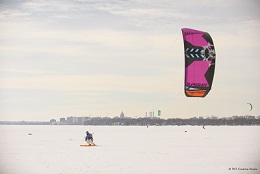
As downhill sports hold steady, other sports, like fat biking and park snowboarding, are soaring ahead. Why? Mountainous landscape is limited. Got mountains? Great. If not, athletes let innovation take the place of elevation. This innovation led to a brand new bike style as well as a whole new way to put that snowboard to use.
The Volcom Peanut Butter Rail Jam is a national series of competitions, culminating in a national championship at Mammoth Mountain, California. But when the event stops in Minnesota, it draws a crowd of passionate snowboarders with a unique park-inspired style.
“The kids hit the rails almost like skateboarding. We don’t have huge mountains here, and so that kind of riding is what Minnesota has become known for,” says Mike Petit, founding owner of The Youth Shelter Supply, one of the biggest snowboard shops in the state. “The top five Rail Jam winners go to nationals, and there aren’t a lot of structured opportunities like that in snowboarding. To a snowboarding kid in Minnesota, the biggest thing they could do is win this contest.”
Champions of Madtown
You might not immediately connect cycling and winter, but for a dedicated group of competitors, they are the perfect match. Wisconsin, it turns out, makes the ideal setting for them both.
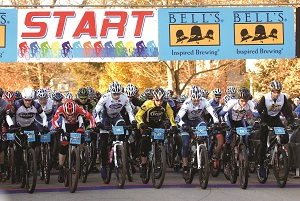
“Because people here love winter, you get tons of volunteers, and we can deliver on spectators too,” says Judy Frankel, director of public relations and communications, Greater Madison Convention & Visitors Bureau.
Both cyclo-cross championships took place in January, a time when the Madison Area Sports Commission is in its element.
“The USA Cycling Cyclo-cross National Championships bring thousands of bikes together with snow and mud and ice, and 10,000 fans cheer it on,” says Jamie Patrick, vice president, Madison Area Sports Commission. It’s a festival. It speaks to who we are, our organization’s nature, and it breathes life into winter in a way people might not expect.”
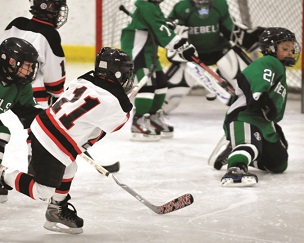
February is typically a slow month for cycling championships, but for 2015, USA Cycling added a national championship in one of winter’s fastest-growing sports: fat biking. Ogden, Utah, will host the inaugural championship on Feb. 14.
“Fat biking has definitely picked up in recent years, becoming so popular that it’s almost been limited only by the number of bikes people can get their hands on,” says Micah Rice, vice president of national events, USA Cycling. “The manufacturers seem to be completely selling out of their inventory every year.”
Responding to the leap in fat biking popularity, USA Cycling worked fast to launch a championship that celebrated their membership’s enthusiasm.
“We’re constantly listening to our membership, our participants who take part in all of our races, and we always look at where trends are, hot spots of interest,” says Rice.
Where there’s a trail, there’s a way
The blossoming popularity of fat biking, which makes use of existing groomed trails, has inspired the age-old controversy: whose trails are they? Just as mountain bikers, hikers and equestrians have learned to share trail systems, and skateboarders and BMX riders have learned to share parks, now cross country/skate skiers and fat bikers are working out a similar compromise.
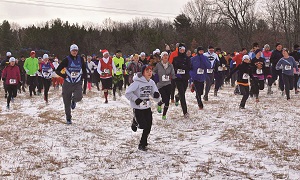
Even as new trends find balance with old favorites, sports events continue. Traverse City, Michigan, is home to two major cross country events: the 50K (or 20K) White Pine Stampede and the two-day North American VASA Festival of Races.
“The strongest thing here is probably cross country,” says Michael Norton, media relations manager, Traverse City Tourism. “We have hundreds of miles of trails, including nearby Sleeping Bear Dunes National Lakeshore, as well as countless miles of trails right in town.”
Traverse City is also home to a legendary bike race, however. The Iceman Cometh Challenge is held each November, a month that can be pleasantly cool or more like a blizzard. Approximately 29 miles long, the race is actually measured in kilometers so that race organizers “have a more accurate idea of where any accidents or injuries happen so we can respond that much more efficiently.” Fat bikes are welcome, but any bike is allowed.
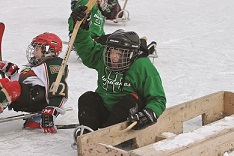
Some sports have enjoyed a broader audience that extends even to locales without a deep winter season, thanks to the invention of indoor ice rink technology in the late 1800s. Sports like hockey, ice skating and curling were once winter-only sports limited to locations where ponds froze solid enough to bear the weight of a team of skaters. Today, even the most tropical destinations can enjoy a taste of winter sports.
Bloomington, Minnesota, is a city fortunate enough to have ample ice as well as ample ice rinks. The city is also home to the Mall of America, an attraction that draws 40 million visitors annually. Put all of that together and you’ve got the perfect recipe for a winter sport success, which is why the area has hosted a number of U.S. Figure Skating events including U.S. Adult Nationals, U.S. Synchronized Championships and the U.S. Figure Skating Championships.
“We’re always involved, handling housing, working with groups to set up different enhancements such as Mall of America, passes to Nickelodeon Universe, pizza parties, even custom key cards for participants’ hotel rooms,” says Todd Lehrke, associate director, sports development, Bloomington Convention and Visitors Bureau.
Independence, Missouri, was thrilled to welcome its own hockey team in 2009, when the Central Hockey League (CHL) started the Missouri Mavericks. Playing at the Independence Event Center, the Mavericks have inspired a loyal following and thousands of young players through the Jr. Mavericks youth hockey program.
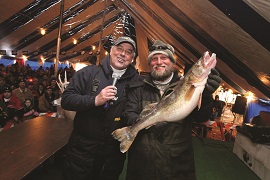
Known by many as the “State of Hockey,” Minnesota has ample indoor hockey rinks, but they also like to get back to their hockey roots, taking the competition out to the pond. The U.S. Pond Hockey Championships, which awards the coveted Golden Shovel and Silver Scoop, began in 2006 and was an immediate hit.
“The sport of hockey is really growing throughout the U.S., and adult hockey overall has been growing with leagues across the states, but for our event, it’s unique. We grew up on outdoor rinks and lakes. You get out the snowblower, clear off the ice and play hockey,” says Jim Dahline, director of marketing, U.S. Pond Hockey Championships. “The teams assembled are a lot of old friends, and it’s about nostalgia.”
It’s also about a community that loves hockey and winter in equal measure. In 2014, Lake Nokomis got an overnight dumping of snow, and first thing in the morning, the rinks were under six inches of powder.
“When you have 25 rinks, that’s a huge amount of snow to clear, but we sent out messages on Facebook, Twitter, our mobile app and so on, and you would never believe the number of people who showed up with their shovels and snowblowers,” says Dahline.
With a huge warming tent, food vendors and a festival atmosphere, this event is built for spectators despite the temperatures, and those spectators show up. One reason, perhaps, is the event’s inclusivity.
“We don’t charge for admission or parking. We just want everybody to come. There’s an entry fee for teams, and we have a lot of great sponsors, and that helps pay for our operations, including an amazing ice crew,” says Dahline. “But what’s most exciting is that everyone who wants to play gets to play. Last year, we had a special hockey game with 8 to 12 year-old kids who don’t have the use of their legs. Anybody who wants to play on the pond, we get them on the pond. That’s what it’s about.”
Ice Bites
Anglers won’t be stopped by below zero temperatures, and Oshkosh, Wisconsin, proves it. On Lake Winnebago every February, the world’s largest ice fishing tournament, Battle on Bago, kicks off. The Oshkosh Southwest Rotary created an event in 2007 to get kids away from TVs and computers and outdoors, involved in conservation.
“The unique thing, which draws a lot of people, is how the prizes are awarded,” says Jeff Potts, marketing director, Oshkosh Convention and Visitors Bureau. “Last year, top prize was a nine-pound walleye that won $2,014. But they give out around 100 prizes by raffle as well. The person who won 150th place with a four-pound fish took home a brand new Ford F10 truck.”
The area is also home to one of America’s only sturgeon-spearing seasons, enticing crowds of eager anglers to hand over their reels for a more ancient method of catching these giant prehistoric fish.
Sports out of Season
By either invention or insanity, some sports are expanding their seasons. In Albany, N.Y., a city surrounded by some of the East Coast’s best skiing and snowboarding areas, winter lovers and running lovers unite for two different December running events, the Last Run 5K and The Santa Speedo Sprint, which – you guessed it – insists that runners wear their tiniest swimsuits.
In Clinton County, Ohio, equestrian events now have a winter home at Roberts Arena, a full service horse show facility that, after extensive renovations and expansion, now offers America’s largest heated equestrian event space.
Whether you’re a fan of freezing temps or just looking for a way to continue your favorite competitions all year long, chances are excellent that one of America’s destinations has exactly what you need. Even on the coldest, greyest days, there’s no excuse not to play.

